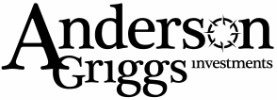|
Our lives often seem to be dominated by numbers. Social Security numbers, drivers’ license numbers, account numbers… an unlimited number of 0’s and 1’s residing in thousands of databases, many of which are designed to keep track of our every move. Most of these numbers used to identify us are not necessarily wanted. However, there are some numbers that we do appreciate. Most are earned through hard work. Youngsters may take pride in their grade point average or SAT scores. For adults, numbers tend to be used to measure our individual accomplishments and disappointments. In June of this year, 31,631 individuals, the most ever, sat down and spent a number of hours taking the CFA Institute’s Level III exam. The Level III exam is the last exam necessary to become a CFA (Chartered Financial Analyst) charterholder. Of the 31,631 candidates, more than 17,000, some 54%, successfully passed. They will become CFAs in October as long as they meet the remaining requirements. I want to welcome all those successful in this academic venture to our club. Like these young students, this is one process that I take a little pride in. My charter is framed and placed on the wall behind my desk so that all can see. My charter number is 18,345, and was given to me in the 31st year of the Institute. Twenty four years later, almost as many CFA candidates will be awarded their charter in a single year than in the first 31 years combined. Now, on to more important numbers concerning the management of our portfolios. Financial research, including research examining common stocks and bonds, often relies on numbers to answer a question. Dr. Hendrik Bessembinder does so when he asks the question, “Do Stocks Outperform Treasury Bills?” I find most academic papers on finance and investing of limited use in the day to day practice of building and maintaining a portfolio designed for individuals. This is not to say I gain nothing from the time spent reading them, as any addition to my own body of knowledge is beneficial. But applying the research is for the most part impractical. However, some research does stand out, though this could simply be that the research I find most useful is that which reinforces my own beliefs. Bessembinder’s most recent paper is one such piece that reinforces our approach to portfolio management. Bessembinder also tells us, however, that we are quite silly to expect positive results because the probabilities of success are extremely small. Bessembinder gives us his answer to the question ‘Do stocks outperform treasury bills?’ immediately in the abstract of his paper: Most common stocks do not. Slightly more than four out of every seven common stocks that have appeared in the CRSP database since 1926 have lifetime buy-and-hold returns, inclusive of reinvested dividends, less than those on one-month Treasuries. When stated in terms of lifetime dollar wealth creation, the entire gain in the U.S. stock market since 1926 is attributable to the best-performing four percent of listed companies. There is an easy way to apply these findings to your portfolio, assuming they are accurate and the results hold true over the next four or five decades. Anyone who has several decades ahead of them and a goal of creation of wealth through common stocks can just buy shares in an index fund of all U.S. domiciled companies and reinvest the dividends. This will ensure the owning of the four percent of common stocks that produce all the returns. In today’s world, it seems that people are jumping wholeheartedly into this approach by buying an index fund and holding on. The largest investors, public pension plans and large endowments, have the time for this, as their timeframe is forever. They are some of the biggest buyers of broad market index funds. However, they have a serious problem, as these plans have a mandatory need for cash flow. By spending the dividends to fund their cash flow needs, they lose the compounding impact of reinvestment that adds substantially to the outcome. Just as with these large investors, most individuals at some point in their lives need cash flow from their savings. It is normally after retirement when cash is needed the most. Because the real benefits of holding all stocks are derived from reinvesting and time, age and cash flow needs minimize, if not entirely eliminate, the proposed benefits of this approach. Although the bulk of Bessembinder’s report shows that the record of common stock performance measured one by one is pretty dismal, it does offer hope regarding active stock selection. This hope for those who pursue individual stock selection is saved for the final two sentences of the study. They are worth repeating: ….The results here show that the returns to active stock selection can be very large. If the investor is either fortunate or skilled enough to select stocks that go on to earn extreme positive returns. Of course, the key question of whether an investor can reliably identify such “home run” stocks, or can identify a manager with the skill to do so, remains. A large number of academic studies on common stocks concentrate on maximizing total return in excess of the market. This is all good and can be quite beneficial. But when a person’s needs change from maximizing total return to the preservation of wealth, a different approach is required. Preservation of wealth does not mean the absence of risk. In fact, it requires a return in excess of price changes (inflation) over time. If cash flow is needed from a portfolio, an approach that has some possibility that the earned rate of return will exceed the cash flow needs, costs, taxes, and inflation is worth pursuing. A difficult, if not impossible task! But by knowing the minimum required rate of return needed to preserve wealth, we can build and maintain a portfolio that increases or reduces risk based on the potential impact to our current state of wealth. A bit more practical than “beating the market.” The universe of companies that we select from for the inclusion in a portfolio have these characteristics:
A little common sense went into the universe selection process. The larger a company, the easier it is to monitor, so if a problem develops we will know almost immediately. A large revenue base assures us that we can place some value on the business itself and rely less on the dreams of what could happen. Low debt and positive cash flow are easy to understand; owning more than you owe, and having more cash coming in than going out, makes it pretty hard to go bankrupt. Finally, a dividend provides some cash flow to meet our individual obligations, or provides an opportunity to diversify if we so choose. Granted, total portfolio returns have more to do with actual company selection and portfolio construction, but it doesn’t hurt the process to select from a pool of companies with characteristics that increase our chances of a successful outcome. This is where the findings of Bessembinder’s work are relevant. Of our requirements listed above, his work positively reinforces our own common sense on investing in large financially sound companies traded on a recognized exchange. Here are some of his findings: On market value: 81.3% of stocks in the largest decile have positive decade buy-and-hold returns, and 70.5% outperformed the one-month Treasury Bill. (The largest decile includes the top 10% of all stocks ranked by market value of equity.) [Table 2A (pg 43) and discussed on pg 15] A final note of caution. I have not given anything close to the full information provided in Dr. Bessembinder’s work. I have pulled information to share with you that reinforces my own beliefs and is relevant to this discussion. If you would like to read the entire study, it is available at the web address provided below.
Until next time, Kendall J. Anderson, CFA *Bessembinder, Hendrik, Do Stocks Outperform Treasury Bills? (August 22, 2017). Available at SSRN: https://ssrn.com/abstract=2900447 Comments are closed.
|
Kendall J. Anderson, CFA, Founder
Justin T. Anderson, President
Categories
All
Archives
April 2024
|
|
Common Sense Investment Management for Intelligent Investors
|



 RSS Feed
RSS Feed